How to Choose the Right Arduino Board for Your Project
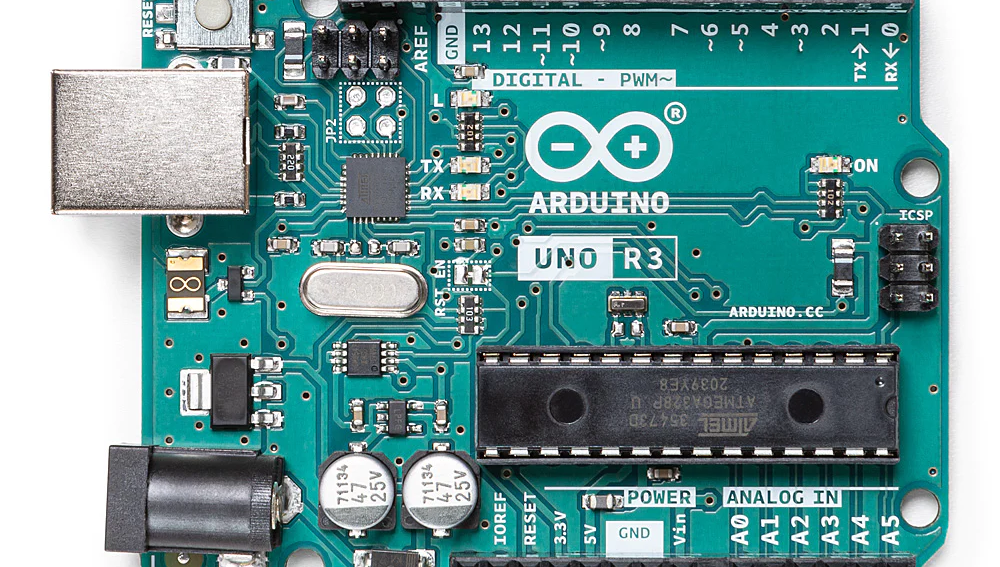
Arduino is one of the most popular open-source electronics platforms that offers a range of microcontroller boards, tools, and accessories for creating interactive projects and digital gadgets.
Due to its popularity among hobbyists, academics, and professionals, Arduino boards are made to be simple to use and programmable.
The Arduino board comes in a variety of models, each with unique features and capabilities.
In this article I’m going to look in detail at the most popular Arduino models, so you can determine which Arduino is best suited for your particular project.
Arduino Uno
The most popular and extensively utilized Arduino board is the Uno.
It’s based on the ATmega328P microcontroller and features 6 analog inputs, 14 digital input/output pins, and a USB connection for power and programming.
It’s a versatile microcontroller board and can be used for a variety of more simple applications.
The microcontroller chip itself is an old, simple 8-bit microcontroller, so it’s not appropriate for more complex applications. Nor is it typically the best microcontroller for mass production regardless of performance.
It works well for projects that need a small number of input/output pins, like small-scale automation, data recording, simple robotics, and home automation.
As an example, an Arduino Uno could be used quite successfully in IoT plant growing systems, which are in high demand.
Since size isn’t necessarily a big priority with grow systems, the Uno could operate an automated system for monitoring, watering, and feeding plants.
The Arduino Uno is capable of regulating things like a pump that delivers water to plants based on their moisture levels.
The Uno is even used in the Open Energy Monitor, a commercially available open-source energy monitoring device that tracks solar PV generation and electricity use.
The system enables customers to track their energy consumption in real-time and examine trends over time, reducing energy waste and lowering monthly energy costs.
Arduino Mega
The Arduino Mega board is comparable to the Uno but has additional analog inputs and digital input/output pins making it appropriate for bigger applications that need more I/O.
The Mega is better suited for bigger projects than the smaller Arduino boards like the Uno or Nano since it contains 54 digital input/output pins and 16 analog inputs.
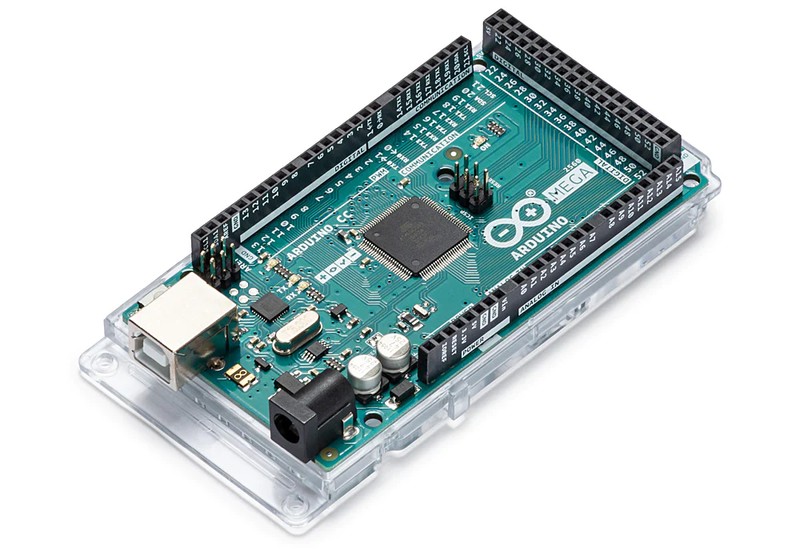
Arduino Mega
The Arduino Mega is perfect for projects requiring a lot of input/output pins, for instance more complicated robots, 3D printers, and other sizable automation tasks.
When you need to interact with a lot of sensors or other devices, or when you need to control a lot of different actuators or motors, the Arduino Mega is an excellent option.
For instance, a large 3D printer or CNC machine needs numerous limit switches, stepper motors, and other sensors, all of which can be managed by the Mega.
The larger memory and processing capability of the Arduino Mega over some of the smaller Arduino boards makes it a better choice for tasks requiring more intricate computations or data processing.
The Mega would be a great choice for automating a large-scale greenhouse.
Whereas the Arduino Uno was sufficient for a small-scale, in-home watering system, the Mega is a good step up when you have a more complicated system in need of automation.
The Arduino Mega would be able to control an automation system for a large-scale greenhouse that comprised actuators for fans, pumps, and other equipment as well as sensors for temperature, humidity, ph, and light levels
Arduino Nano
The Arduino Nano is a more compact and miniature version of the Uno board. Though smaller in size, it has the same capabilities as the Uno.
A small and simple microcontroller board, it’s ideal for small-scale applications that need to blend in or be integrated into a bigger system.
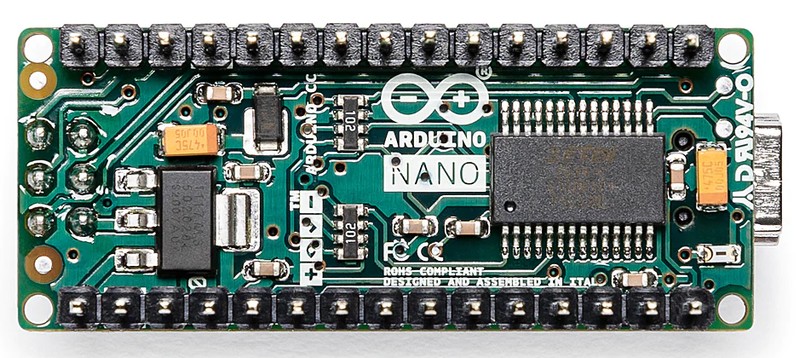
Arduino Nano
Compact size is one of Arduino Nano’s best selling points. The Nano is substantially smaller than other Arduino boards, which makes it perfect for projects that have limited space.
The Nano is also a reasonably priced board, making it a viable choice for DIYers and hobbyists.
The Nano is a versatile board that could work in a variety of projects, since it contains a wide range of input/output pins, including digital and analog pins.
It’s also simple to use and program.
It does have some drawbacks. The Nano has a less powerful processor than some of the other Arduino boards, which can affect how well it performs for more challenging tasks.
It also has less memory compared to some of the other Arduino boards, which may be a problem for applications that call for greater data processing or storage.
Although it has a wide variety of input/output connections, the Nano has fewer pins than some of the larger Arduino boards, which may be a problem for larger applications.
What are a few instances of hardware projects that successfully employ the Arduino Nano?
The Nano would be a great choice for a Smart bike light that changes its brightness and flashing pattern in response to outside light and the presence of other vehicles.
Or an Arduino Nano can be used to drive a miniature robot that is made to go through its environment by detecting obstacles with sensors and following a path.
All things considered, the Arduino Nano is a flexible and affordable microcontroller board that works well under size constraints.
It remains a popular option for DIYers and hobbyists due to its tiny size and broad range of input/output pins.
Arduino Leonardo
This board’s built-in USB connectivity and ATmega32u4 microprocessor enables the Leonardo to function as a USB device, such as a keyboard or mouse.
This makes it a good fit for tasks requiring keyboard or mouse input or communication with a computer.

Arduino Leonardo
The other Arduino boards discussed so far use a microcontroller that doesn’t natively support USB, so they have included on the board a separate microcontroller that serves simply as a UART to USB converter.
The ATmega32u4 used in the Leonardo and Micro instead includes native USB support eliminating the need for the second microcontroller.
With some pins that may be used for analog input, digital input/output, or pulse-width modulation, the Leonardo features a more adaptable input/output system than some other Arduino boards.
Compared to the Uno, it features more digital input/output pins. This increases its adaptability for particular project types.
The Leonardo is a good choice for applications that need human interface (HID) capabilities, including anything involving keyboards, a mouse, or game controllers, because it supports USB.
Arduino Micro
The Arduino Micro is a microcontroller board based on the ATmega32U4, just like the Leonardo.
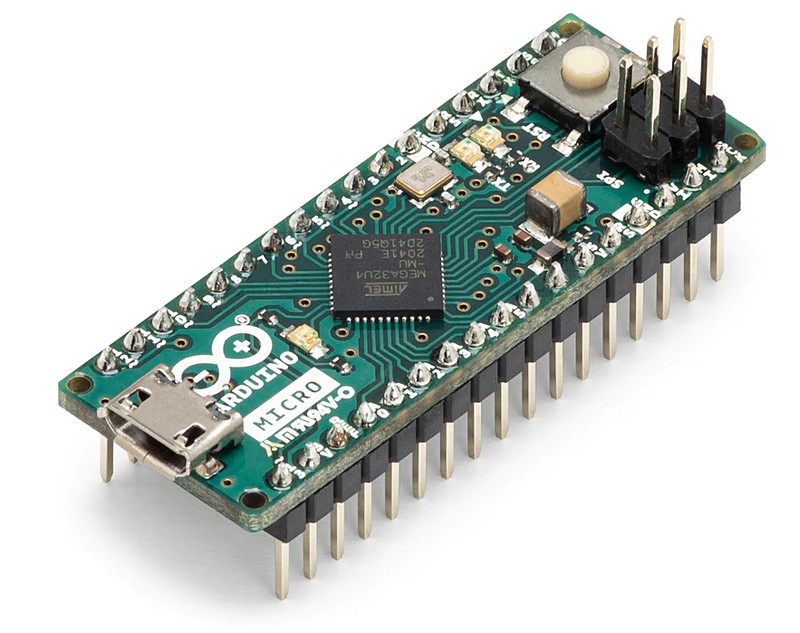
Arduino Micro
It contains a 16 MHz crystal oscillator, a micro USB port, an ICSP header, a reset button, and 20 digital input/output pins, 7 which can be used as PWM outputs and 12 can be used as analog inputs.
It comes with everything required to support the microcontroller. To get started, you only need a micro USB cable to connect it to a computer. It can also be readily mounted on a breadboard thanks to its physical factor.
Arduino Due
The Due, unlike the previous boards which all used simple 8-bit microcontrollers, is instead based on a 32-bit ARM Cortex-M3 processor.
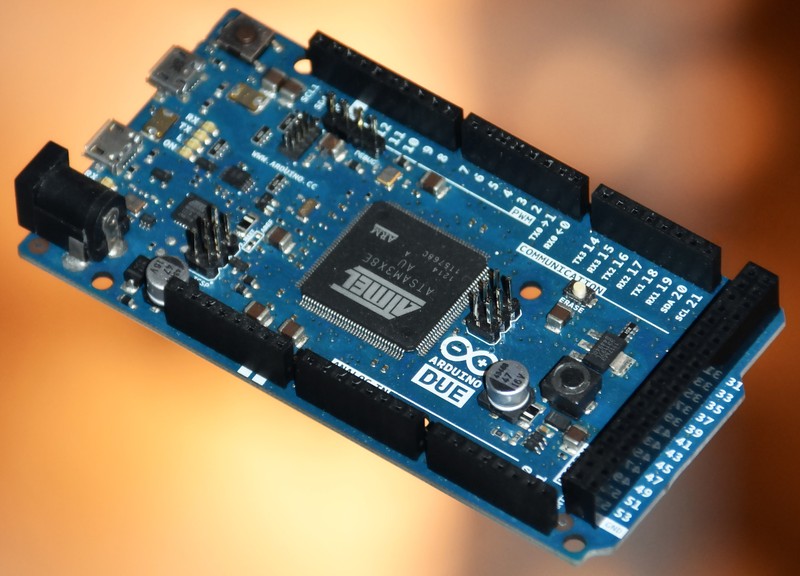
Arduino Due
The Atmel SAM3X8E ARM Cortex-M3 CPU, which powers the Arduino Due microcontroller board, runs at 84 MHz.
A big perk for using Arduino Due is its higher processor performance compared to simple 8-bit microcontrollers. The Due’s ARM Cortex-M3 CPU enables it to work at a much faster speed than most other Arduino boards.
This makes the Due great for projects that need powerful processing or real-time reaction.
For commercial product prototypes, it’s usually best to use a 32-bit microcontroller like the one used in in the Due, or in MKR series and Nano 33 that I’ll discuss next.
The simple 8-bit microcontroller boards like the Arduino Uno, Nano, Micro, and Leonardo are best for simple DIY maker projects.
Compared to some other Arduino boards, the Due has more memory, which makes it a good choice for applications that call for a lot of data storage or program memory.
The Due also has more input/output pins when compared to certain other Arduino boards, which may make it more adaptable for various projects.
Downsides are that the Due is typically more expensive than some other Arduino boards, and it consumes more power.
It consumes more power due to its faster processing speed, which may be an issue for applications that have a limited amount of power.
In general, the Arduino Due is a suitable option for projects requiring a lot of memory, real-time processing, and high processing performance, such as robotics or data collection and processing tasks.
Arduino MKR Series
A family of microcontroller boards known as the Arduino MKR series was created especially for Internet of Things (IoT) projects.
The MKR boards are a great option for connected devices because they are more compact, powerful, and energy-efficient than many other Arduino variants.
They offer a range of connectivity choices and they have 32-bit microcontrollers.
These boards have a tiny form size, low power consumption, and wireless connectivity choices like WiFi, Bluetooth, and LoRa.
The MKR series’ emphasis on Internet of Things applications is one of the key distinctions between it and other Arduino variants.
The MKR boards are made to be utilized in projects that need low power consumption and wireless communication.
Also, compared to many other Arduino models, they are more compact and smaller, which makes them perfect for projects that need a small form factor.
The MKR series’ networking possibilities are its key selling point. These boards are perfect for Internet of Things applications because they include WiFi, Bluetooth, and LoRa built in, which makes connections to the internet and other devices simple.
They are ideal for battery-powered gadgets because they are also energy-efficient.
The Keg Cop, a smart keg monitoring system, is one example of a real-world gadget that employs the Arduino MKR series.
The Keg Cop uses an Arduino MKR WiFi 1010 to keep track of a keg’s carbonation, temperature, and beer level.
A mobile app that receives the data enables bar owners to remotely monitor their kegs and receive notifications when the beer needs to be refreshed or there is a problem.
The MKR WiFi 1010 is a great option for this kind of application because of its compact size and wireless connectivity. This made it easy to integrate into the keg monitoring system without taking up too much room or electricity.
Arduino Nano 33
The final Arduino board is the Arduino Nano 33 which other than its size has nothing in common with the standard Arduino Nano.
The “33” in the name is the key indicator which means it uses a 3.3V I/O instead 5V I/O like the other Arduino boards.
There are three versions of the Nano 33: Nano 33 BLE, Nano 33 BLE Sense, and Nano 33 IoT.
All of the Nano 33 boards, like the Due and MKR series, use a 32-bit Arm Cortex-M microcontroller.
The Nano 33 BLE and Nano 33 BLE Sense boards both use a microcontroller chip from Nordic Semiconductors called the nRF52840.
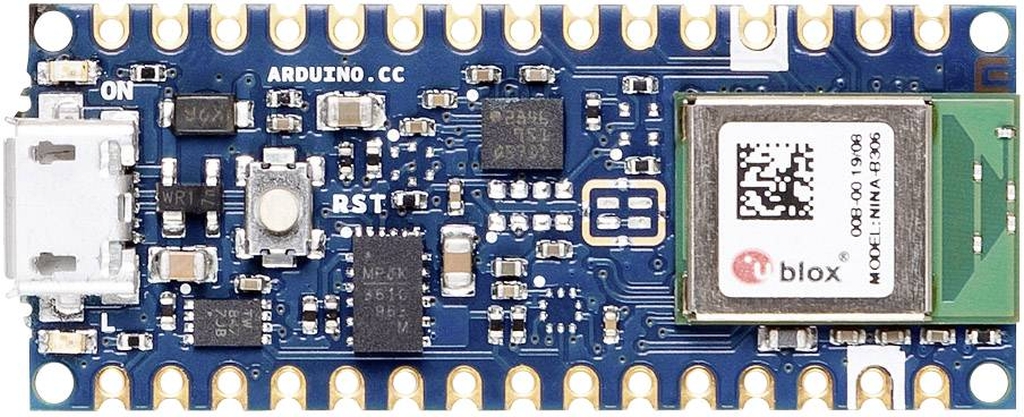
Arduino Nano 33 BLE
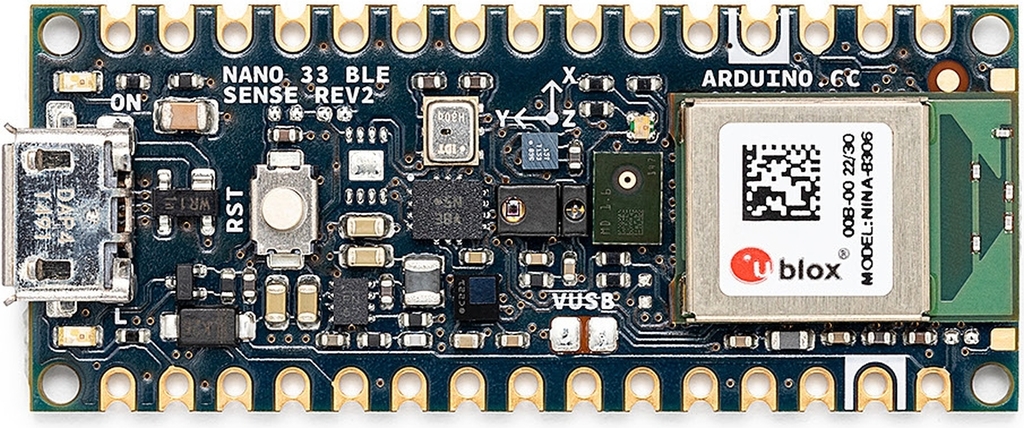
Arduino Nano 33 BLE Sense
Nordic embedded a Bluetooth radio along with the processor core, all in a single chip, commonly referred to as a Bluetooth microcontroller.
While its small size makes it desirable for many projects, it also boasts a clock speed of 64MHz, 1MB of flash memory, and 256KB of SRAM.
The Built in BLE capabilities makes it a wise choice for any products that need to communicate wirelessly.
The “Sense” version simply adds on a lot of various sensors to the Arduino Nano 33 BLE board including temperature, humidity, light, sound, and barometric pressure, along with an accelerometer, gyroscope, and magnetometer.
This makes it a stellar choice for products that require different types of sensory input while operating.
But it does add a bit of cost and complexity, so if your product doesn’t require these built-in sensors, it’s best to just go with the Nano 33 BLE.
Finally, the Nano 33 IoT mixes things up again and is considerably different from the other two Nano 33 boards.
The Nano 33 IoT instead uses a non-Bluetooth Cortex-M microcontroller, but then adds on a separate module that provides WiFi and Bluetooth.
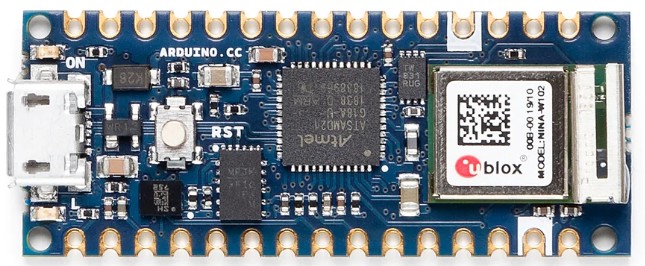
Arduino Nano 33 IoT
Conclusion
For DIY maker projects for fun any of these boards can be used, and in most cases I’d suggest going with the simplest board that will meet the needs of your application.
For most commercial projects for products that will be brought to market, I’d suggest sticking with the Arduino boards that use 32-bit Cortex-M microcontrollers including the Due, MKR series, and Nano 33 boards.


The Nano is slightly better than the Uno, having two extra analog inputs (A6 and A7), although they can not be used as digital inputs. Plus it’s breadboard compatibility is a massive plus compared to dangling and fragile jumpers.
The Due is also 3.3v IO, which is a rather important factor when deciding on what peripherals are required.
A quick comparison table, or the actual numbers for things like clock speed and SRAM would be useful (particularly as this makes it sound like the Nano is perhaps worse than the Uno, when it isn’t).
This list is also missing the new Nano Every, the GIGA, and the Zero
Is there an arduino compatible module that integrates all the auxiliary electronics to the microcontroller to quickly implement a design in an industrial way without having to reinvent the wheel every time?
For example battery charger with status monitoring, digital switch power off/on and a RTC clock.
Something similar to a M5STACK but not including the microcontroller, and can be connected to any arduino ?
How do the RP2040 boards compare?
Darn it, I forgot to include the RP2040 based Arduino:( I’ll have to append this article to include it. Thanks!